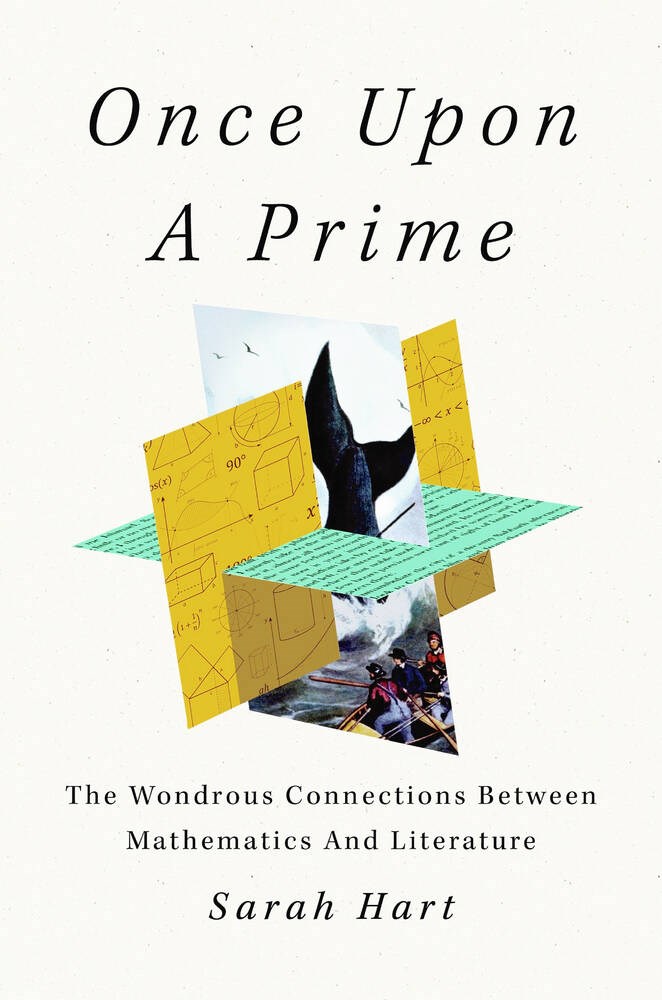“You’re just not a maths student, Johnson.”
So said my Grade 12 math teacher with a certainty that led me away from math and toward humanities for the rest of my life.
In more recent years, I might have had the gumption to reply: “Are you sure you’re not telling me I’m just not a math teacher?”
During the ensuing years, I’ve had the opportunity to observe many very good math teachers, including some fourth-year university students who were training to become math teachers.
I’ve watched these teachers get their kids excited about math (arithmetic, algebra, trigonometry, even calculus) and I’ve always had the same reaction: “This is fascinating stuff — how did I miss out on this?”
Still, a lifetime of enjoying literature might have been even more enjoyable if I’d had the opportunity to read British author and mathematician Sarah Hart’s new book Once Upon a Prime: The Wondrous Connections Between Mathematics and Literature.
Goodreads, the world’s largest site for readers and book recommendations, describes it as a “hugely entertaining and well-written tour of the links between math and literature. Bookworms and number-lovers alike will discover much they didn’t know about the creative interplay between stories, structure and sums.”
There have been numerous academic studies on mathematical aspects of specific genres and authors. But the more complete connections between mathematics and literature have not received the attention they deserve.
In the New South Wales, Australia, system of public education, even in recent decades, students are often forced, post-secondary, to choose between studying either math and science or the humanities and prepare to become teachers of one or the other.
As far as I know, the same applies here, or at least it did when, as a 1970s-era wet-behind-the-years vice-principal of a 527-student Grade 8 sub-school in a very large high school of 3,000 students, I proposed to Grade 8 teachers that students could meet fewer teachers if the same teacher taught both English and math in a cross-curriculum class.
I can still hear the response: “Geoff, you don’t understand — I am a math teacher, not an English teacher.” This despite the fact that the kids had just come from elementary school, where their Grade 7 teacher taught everything.
But I digress.
The notion that one would have to choose between mathematics and literature is, I think, a symptom of an educational house unfortunately divided — not only because the two fields are fundamentally related, but also because understanding the links between them can enhance a student’s enjoyment of both.
In fact, the artificial division between math and literature is actually very recent. For much of history, mathematics was an essential part of every educated person’s cultural awareness, along with literacy.
Plato’s Republic, for example, put forward the ideal curriculum of arts to be studied and combined the trivium (grammar, rhetoric, logic) and the quadrivium (arithmetic, music, geometry, astronomy).
The 11th-century Persian scholar Omar Khayyám, to whom the poetry collection known as the Rubaiyat is attributed, was also a mathematician, and created geometric and full algebraic solutions to mathematical problems not found for another 400 years.
Then there was Lewis Carroll, of Alice in Wonderland fame, who was a mathematician first and an author second.
I now understand that good mathematics, like good writing or good music, involves an appreciation of structure, rhythm and pattern.
A great novel, or a perfect sonnet — even a timeless 32-bar jazz standard — should have all the same kinds of element parts fitting together perfectly in an agreeable harmonic whole.
It’s the same feeling I get when I’ve watched an excellent math teacher unravelling a logical mathematical or algebraic proof to his or her students — it just works. —
The mathematician G.H. Hardy, known for his achievements in number theory and mathematical analysis, wrote that “a mathematician, like a painter or poet, is a maker of patterns. … there is no permanent place in the world for ugly mathematics. As a mathematician, it’s been one of the great joys of my career to uncover and explore these connections.”
And Hart writes in her book that “great literature and great mathematics satisfy the same deep yearning in us: for beauty, for truth, for understanding. As the pioneering Russian mathematician Sofia Kovalevskaya wrote: ‘It is impossible to be a mathematician without being a poet in soul … the poet must see what others do not see, must see more deeply […]. And the mathematician must do the same.’
Fortunately, I have few regrets in life, but one is the regret at having been steered away from the fascination of math at such an early age.
gfjohnson4@shaw.ca
Geoff Johnson is a former superintendent of schools.
>>> To comment on this article, write a letter to the editor: letters@timescolonist.com



